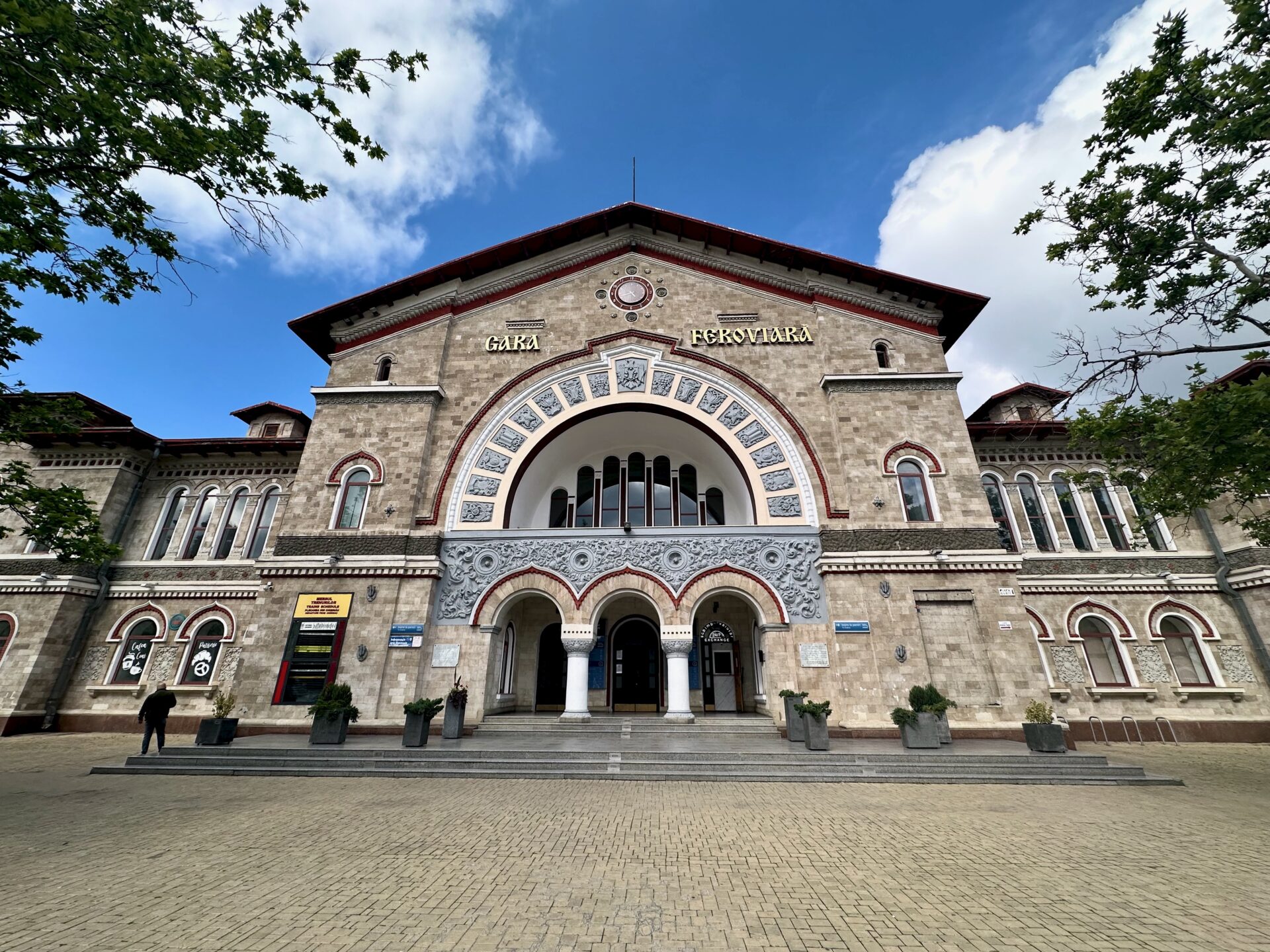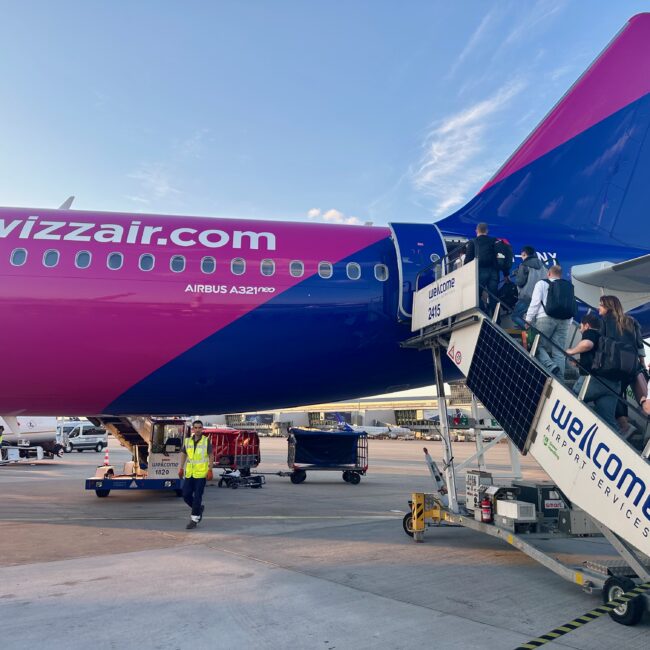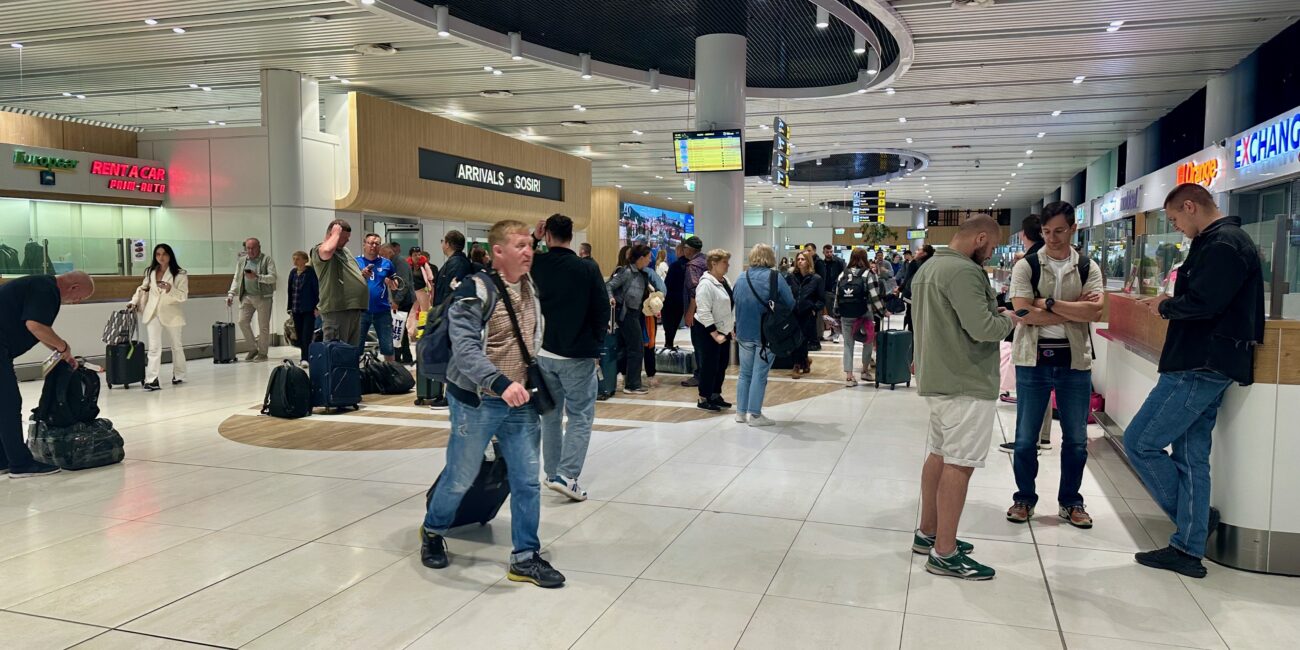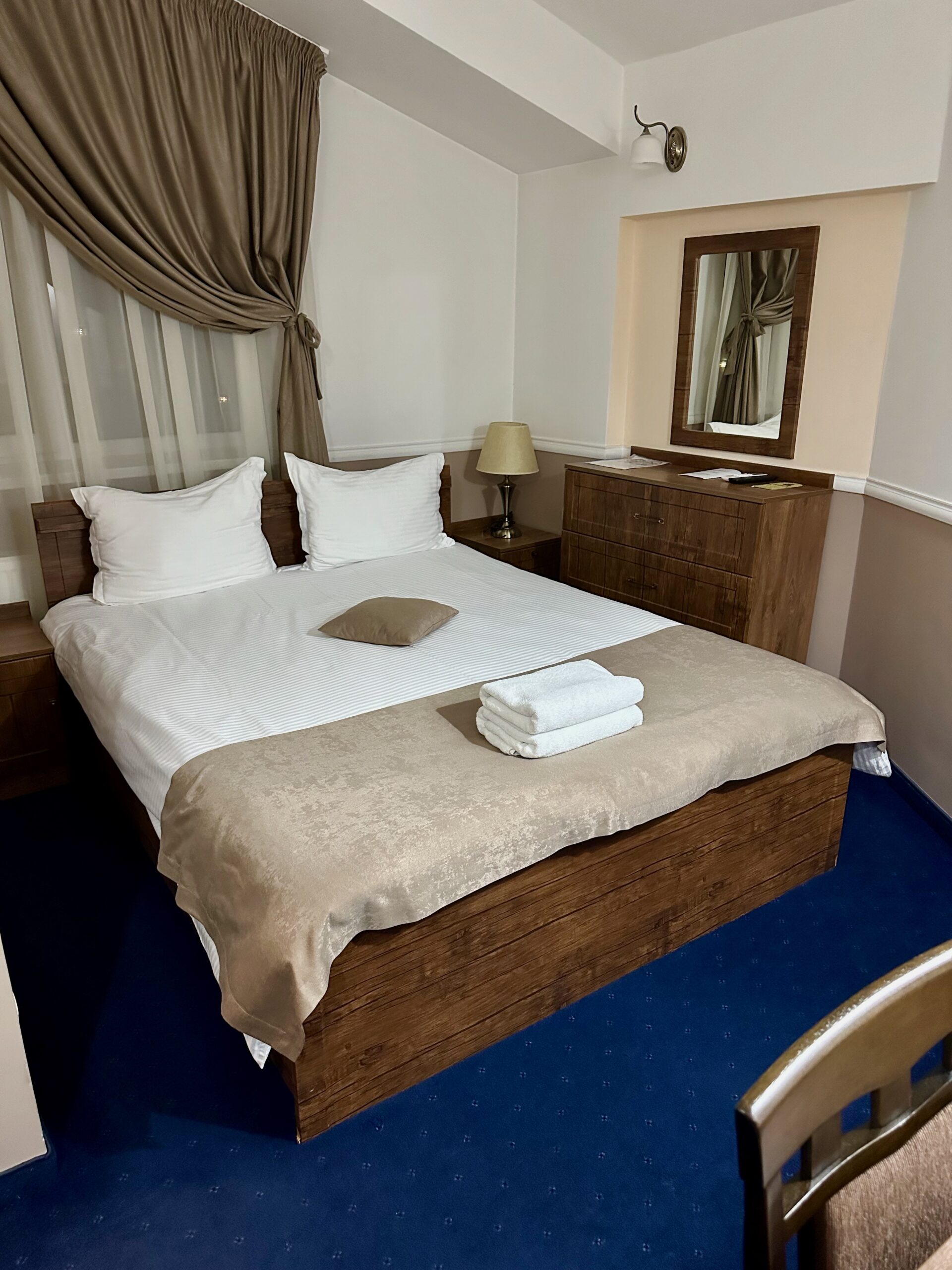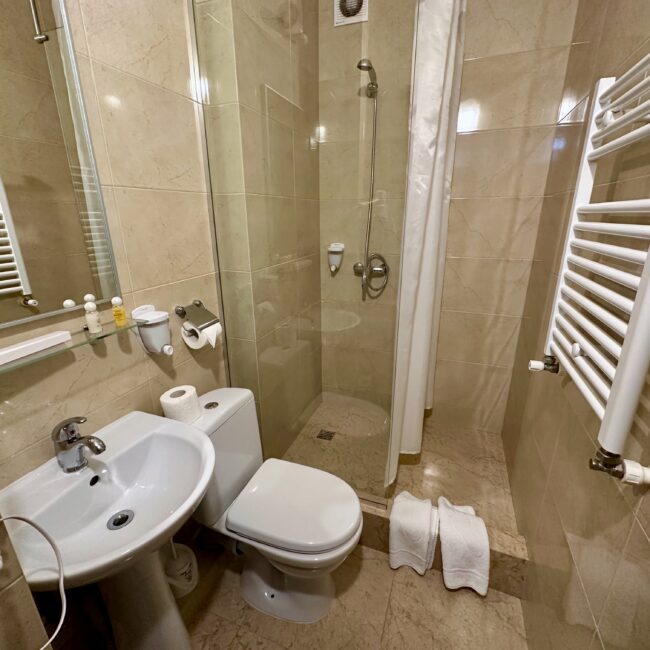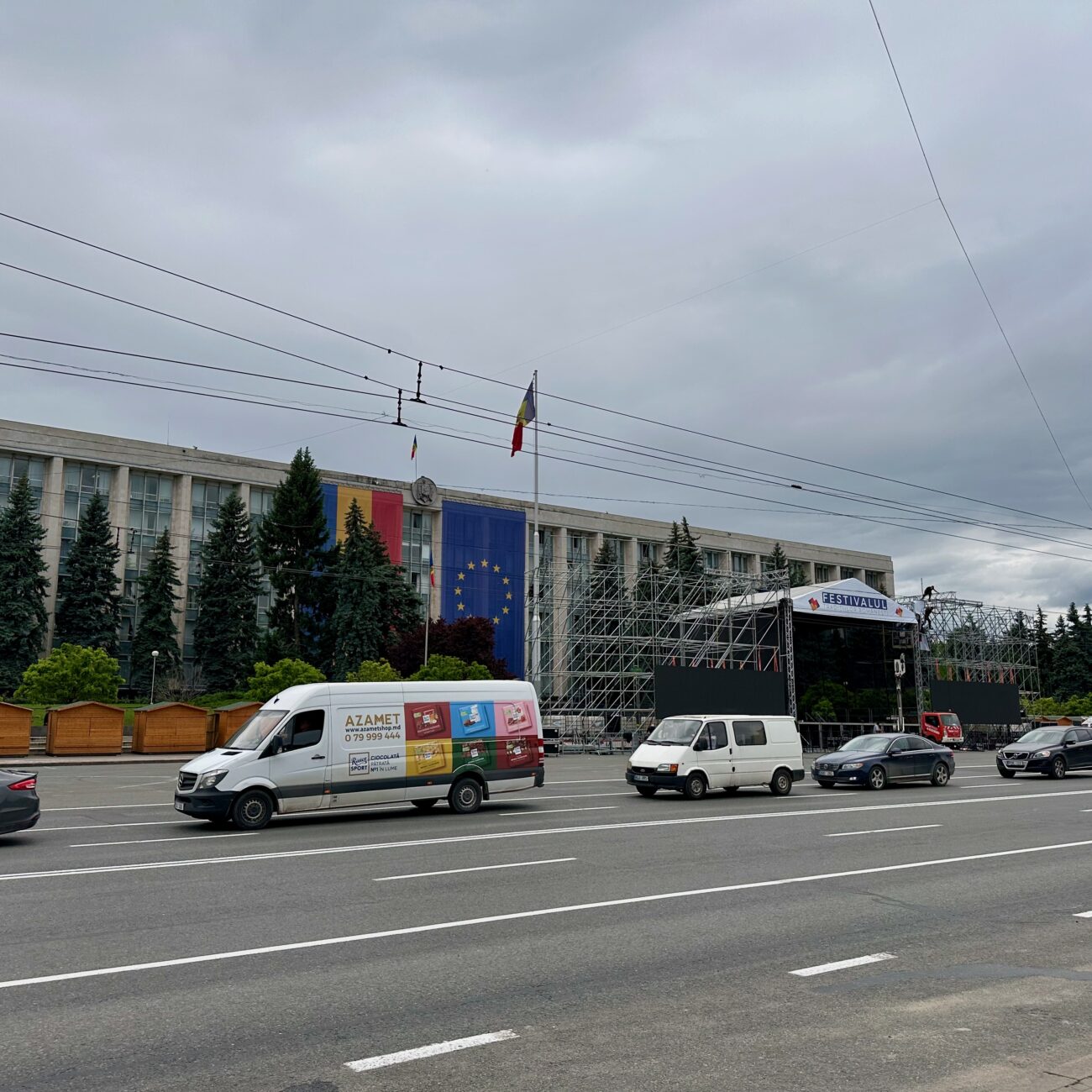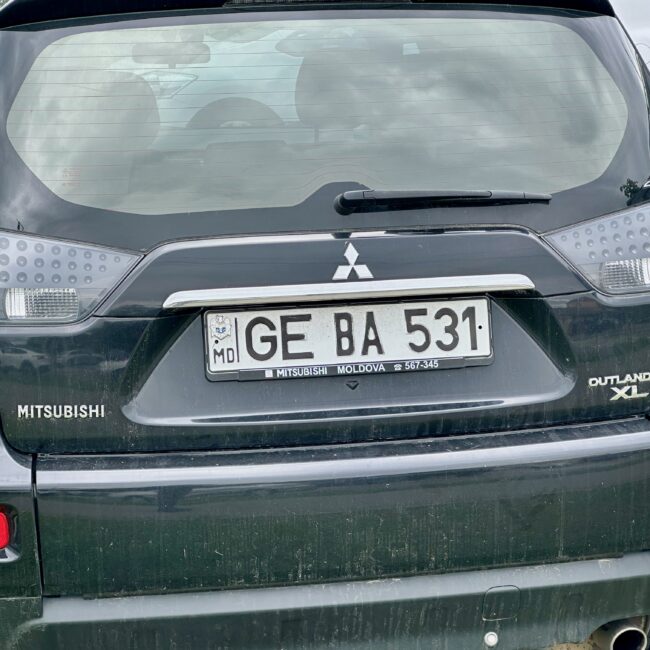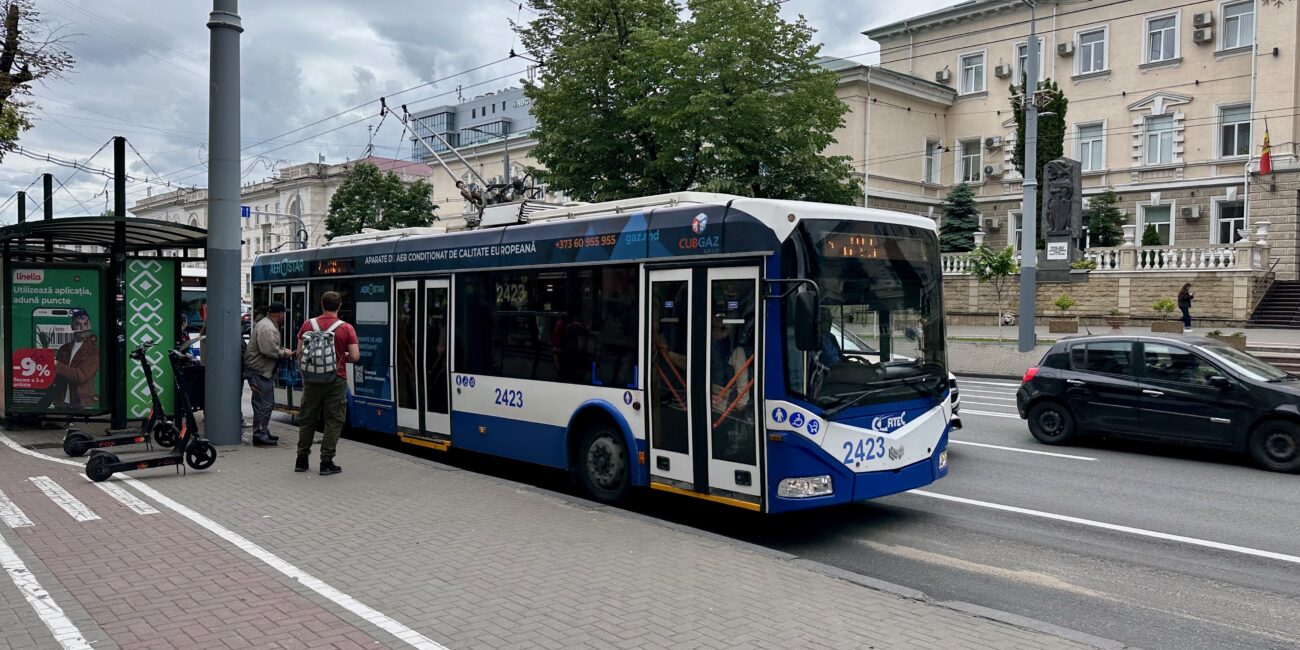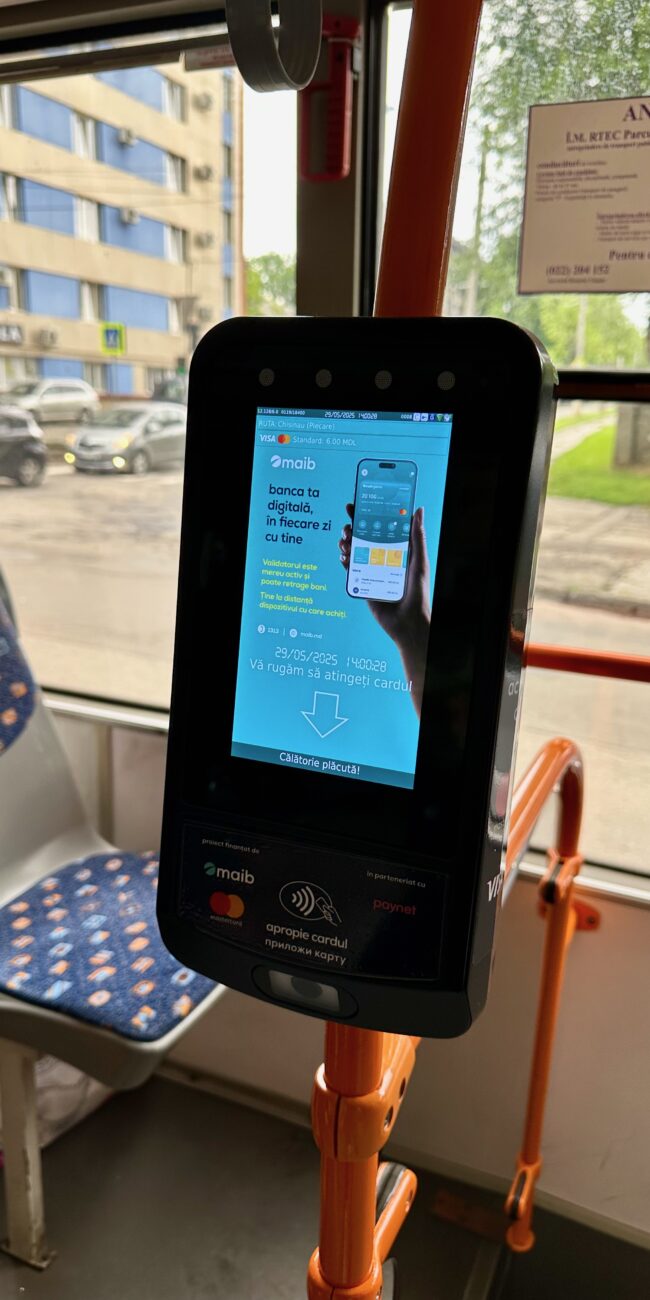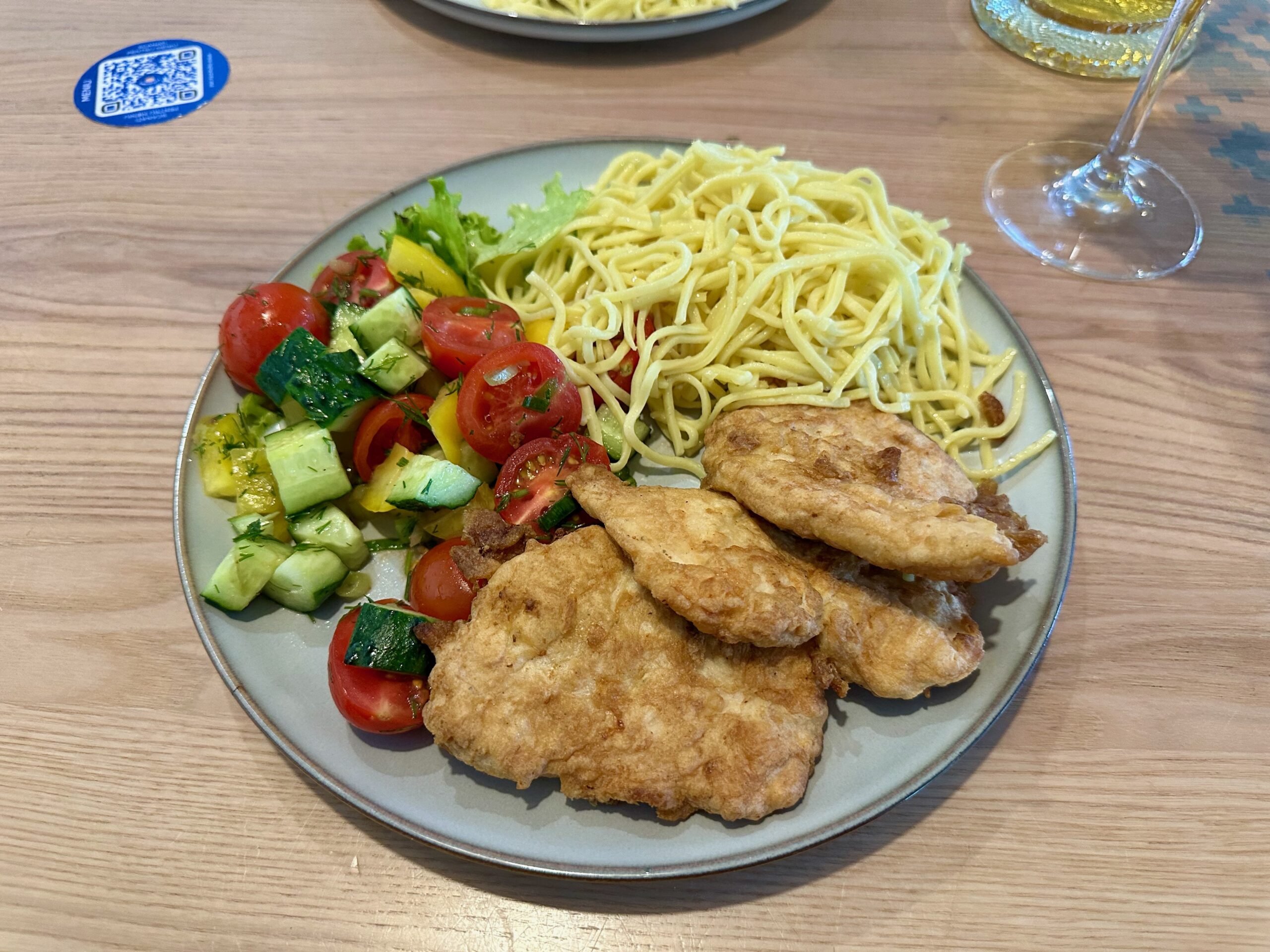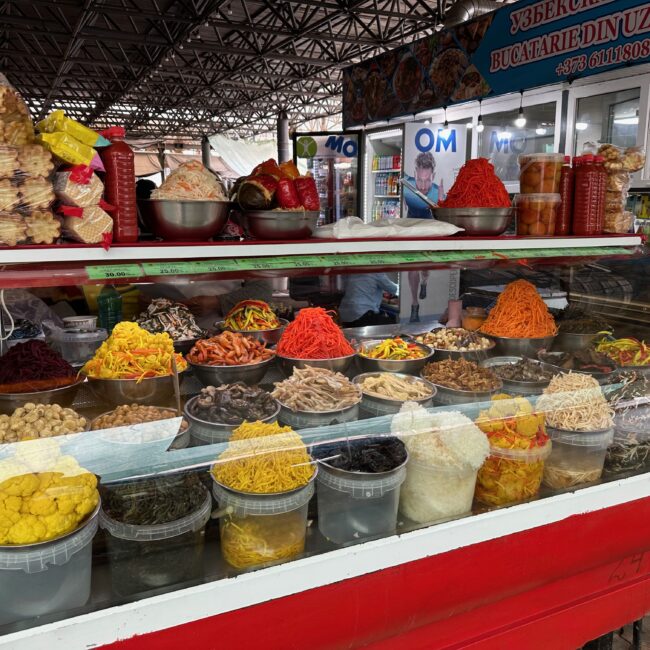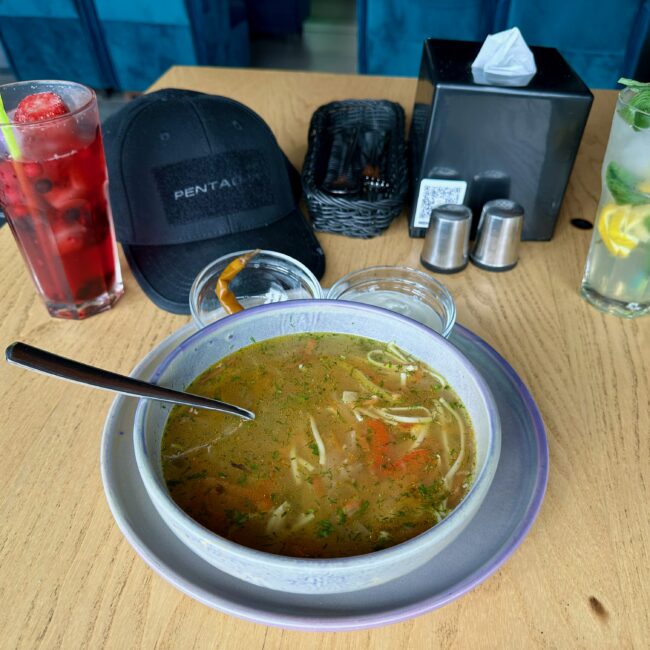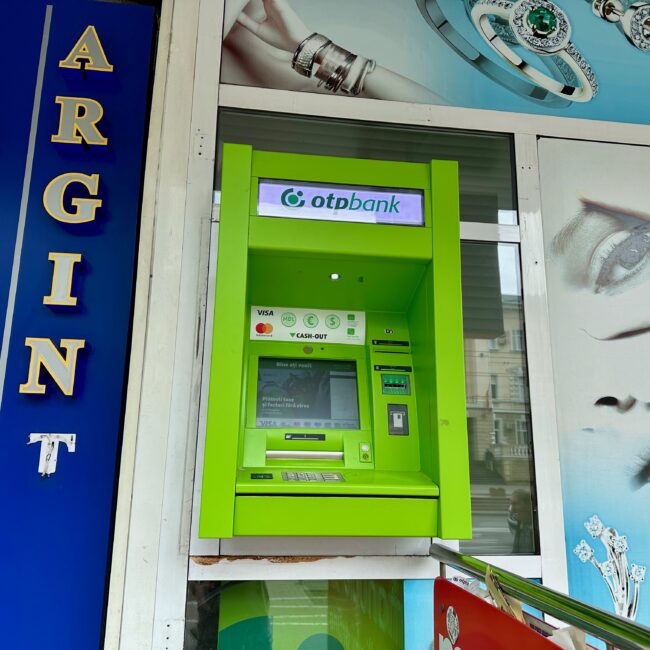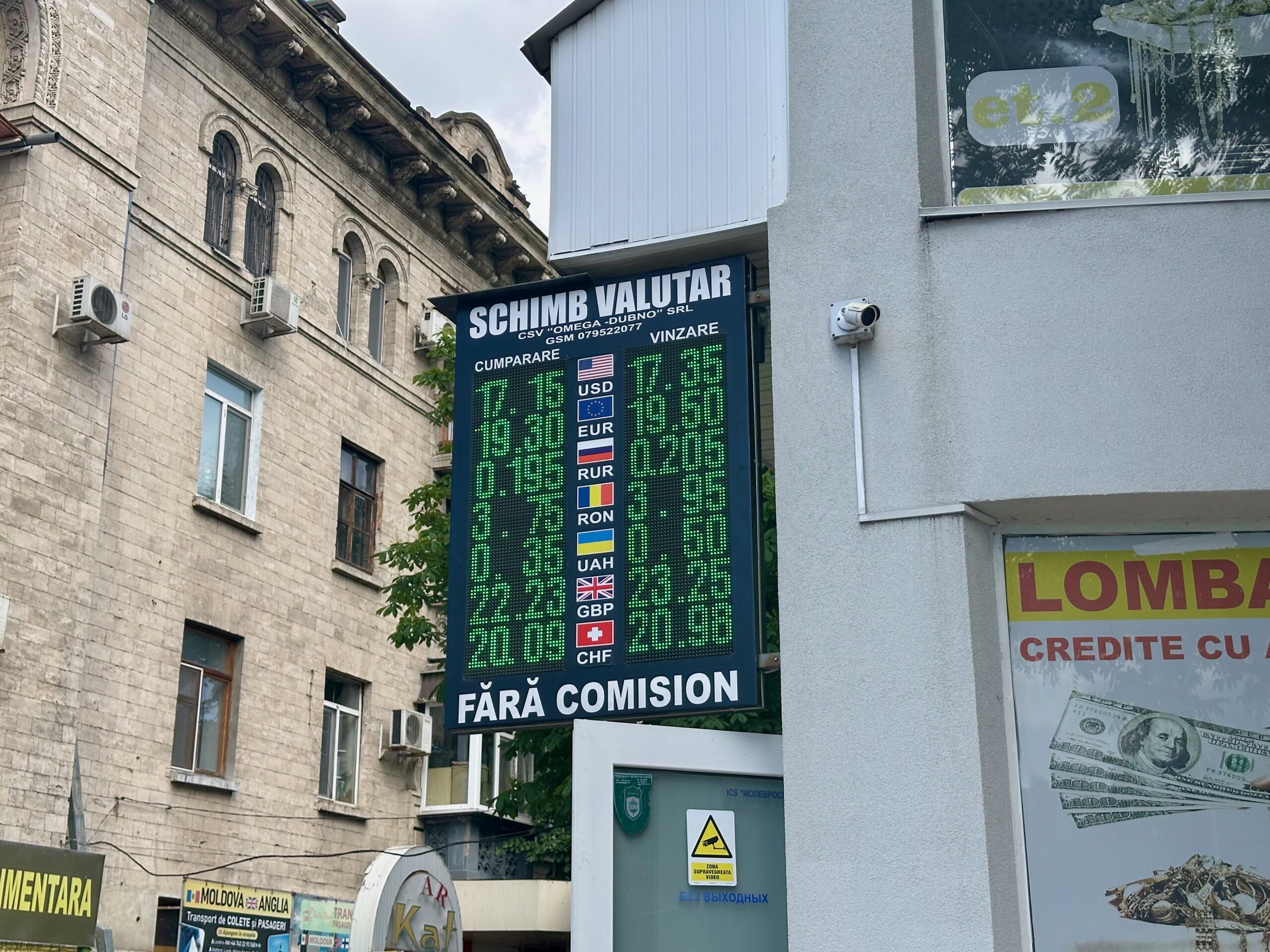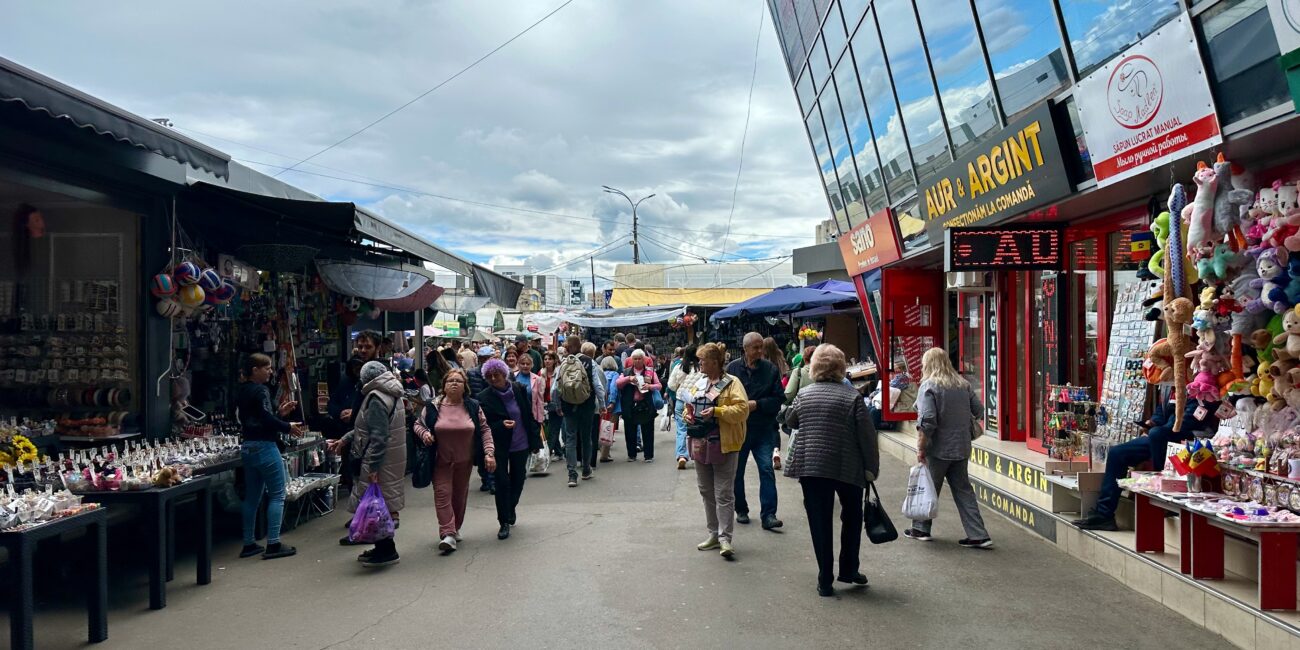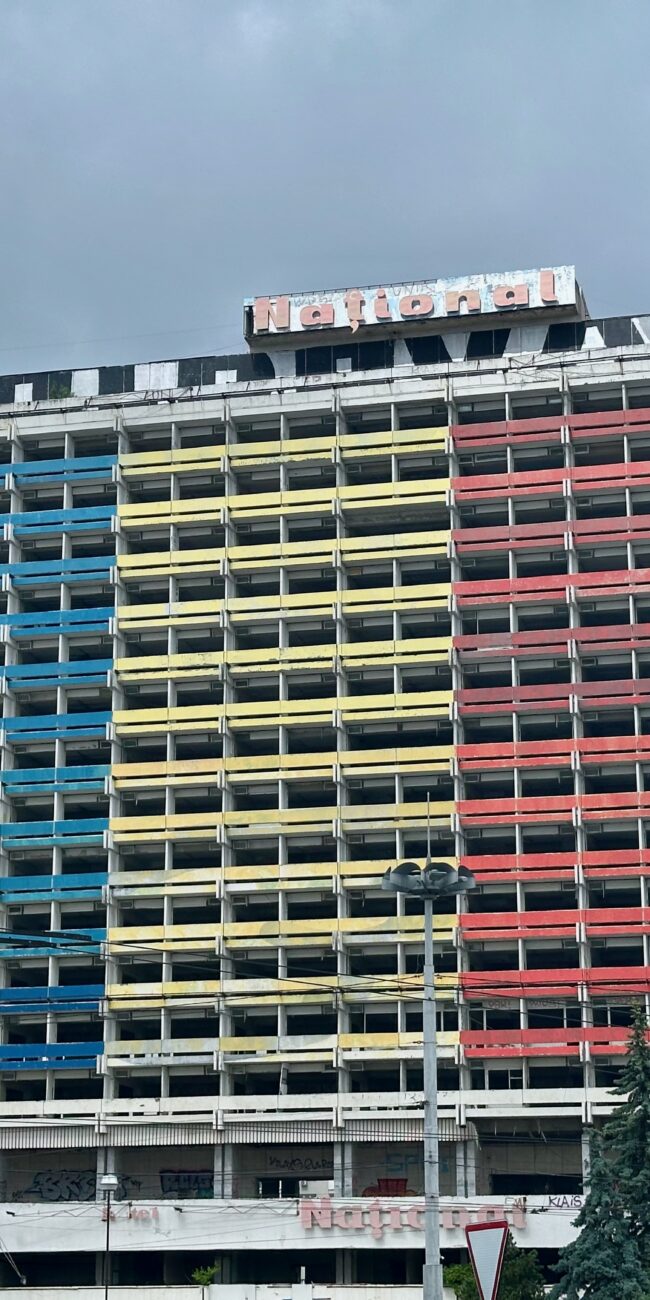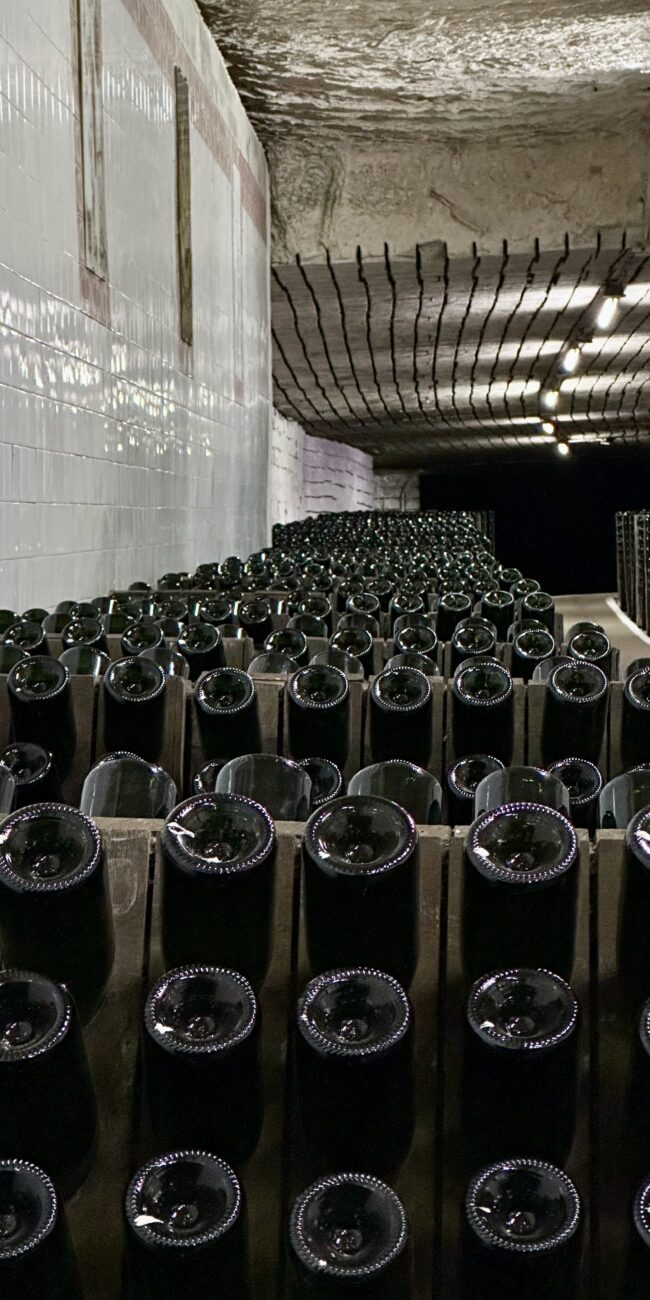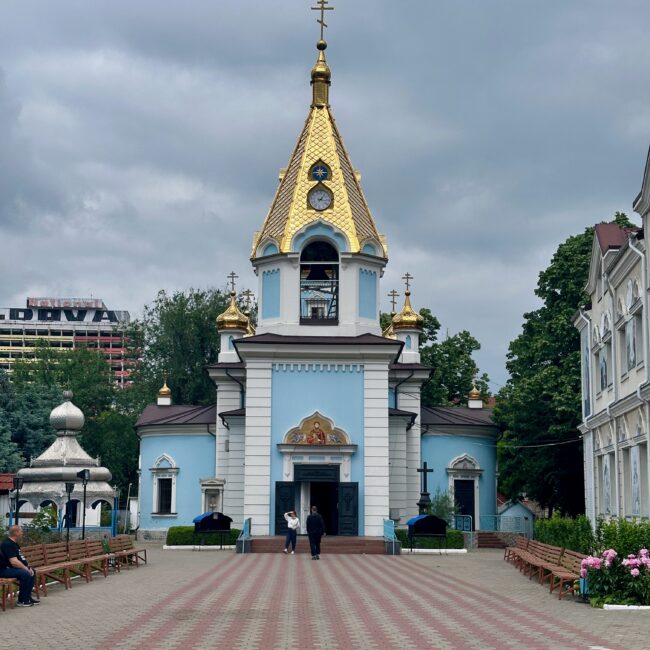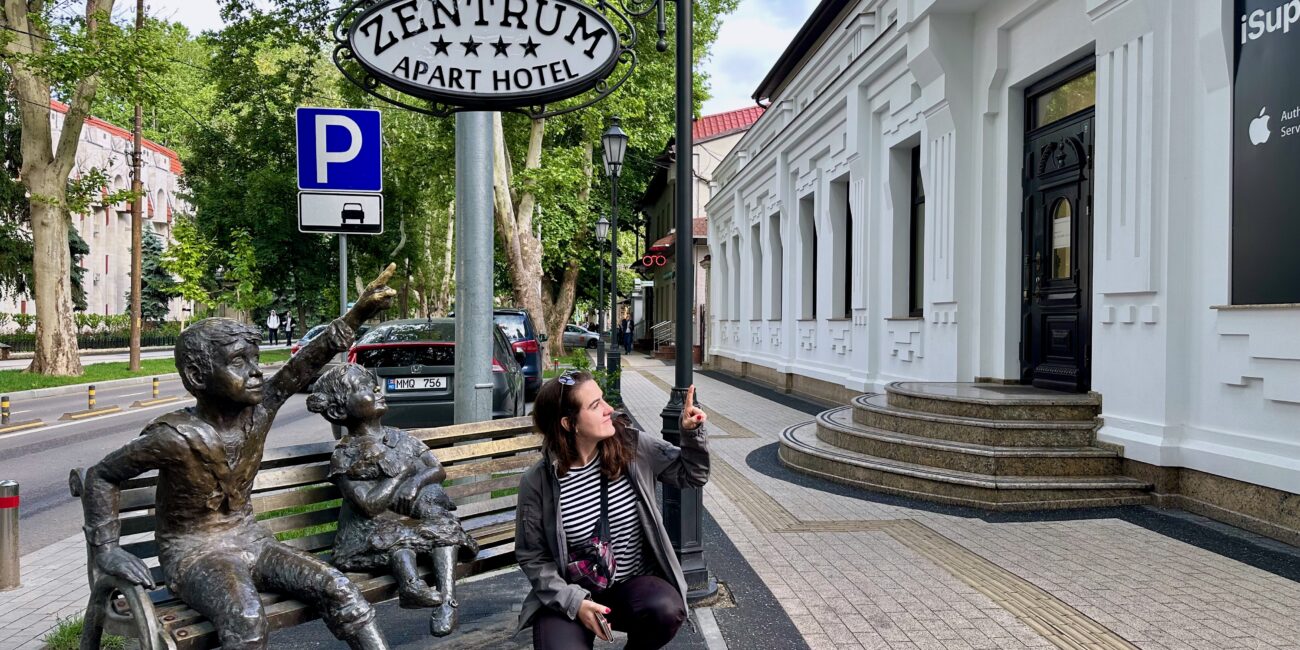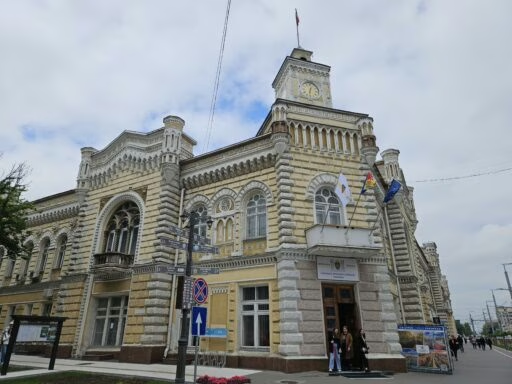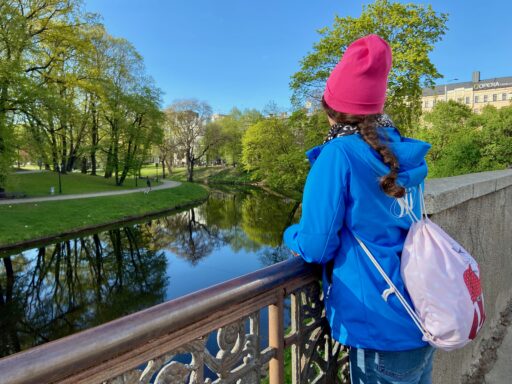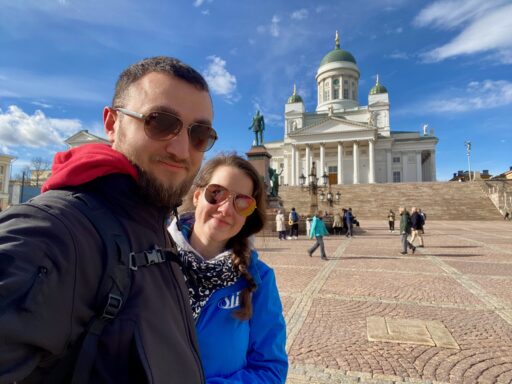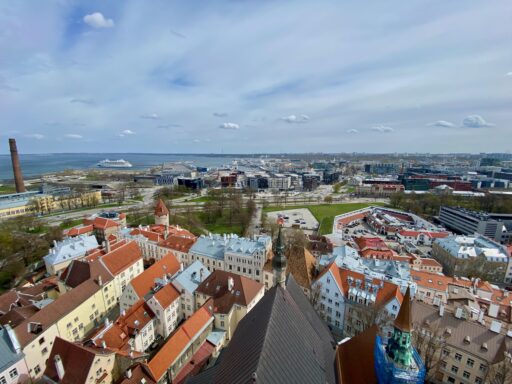This post is also available in:
Polski
Hello! 👋
It was one of those trips that start with: “What if we just went somewhere?” In June 2025, we landed on Chișinău. A short, laid-back city break, no detailed plans – we simply wanted to see what Moldova’s capital looks like and whether it’s worth adding to the weekend getaway list. And well… it turned out to be interesting.
Where is Chisinau located?
Chișinău is the capital of Moldova – a country tucked between Romania and Ukraine. The city itself sits roughly in the center of the country, along the Bîc River. Some might say it’s “Europe, but with a twist.” And that’s pretty accurate – Moldova is one of those lesser-known destinations, rarely crowded with tourists.
Each year, more foreign visitors find their way here, but it’s still far from a tourist hotspot like Prague or Budapest. Chișinău is home to around 665,000 people, and Moldova remains one of the least touristy countries in Europe. We’re talking just a few tens of thousands of international visitors annually — for example, in 2022, only about 162,000 tourists came from abroad. That’s exactly what makes Chișinău appealing for those looking for something quieter, less predictable, and blissfully free of crowds.
Setting off from Poland to Moldova
We booked our tickets about a month in advance – a pretty decent deal: 140 PLN per person round trip with Wizz Air from Warsaw. Our flight was delayed, but since we had access to a business lounge thanks to Revolut’s Smart Delay, we actually didn’t mind at all.
I wrapped up some work, Jadzia had a relaxed dinner, and before we knew it, it was time to head to the gate. The plane was almost full, but the flight itself was quick and smooth. As for comfort—well, it’s Wizz Air, so you know the deal: you get what you pay for.
Visas and documents
If you’re coming from Poland (or another EU country), a valid passport or national ID is usually all you need – Moldova accepts EU documents, and Polish citizens can stay for up to 90 days without any special procedures. We went with our passports – mostly because we enjoy collecting stamps and love the vibe of crossing a proper border. 😉
If you’re planning a road trip from Poland to Moldova by car, it’s worth knowing that it involves a bit more than just your passport and driver’s license:
- A Green Card or local border insurance is a must – since Polish third-party liability (OC) insurance doesn’t cover you outside the EU.
- At the border, you’ll need to declare your vehicle and pay a mandatory road tax (vignette), which you can buy either at the crossing or online at evigneta.gov.md.
- You’ll need to carry your driver’s license, vehicle registration, insurance policy, and—of course—your passport or ID, as those will also be checked at the border. All documents should be valid for at least 90 days from your entry date. .
- If the car isn’t yours, you’ll also need a notarized authorization from the owner, translated into Romanian or Russian, including all vehicle and driver details.
Accommodation
We booked our stay through booking.com and chose Hotel Astoria. Four nights with breakfast cost us 951 PLN. Sounds decent in theory, but… the breakfasts got old pretty quickly. After two days, we gave up on them altogether – the selection was poor, the bread and toppings were basic, and cold cuts were practically nonexistent. If you showed up after 9:00, you were stuck with leftovers, and if you wanted a cup of hot tea, you had to ask for it and then wait.
The room itself? Nothing special, and the bathroom was tiny too, but honestly – it wasn’t that bad. Just a standard, average place. One big plus was the location – we were a short walk from the city center and could get around on foot without any issues. Also nice: the nearby long-distance bus terminal, in case someone’s planning trips outside the city.
Would we recommend it? If you’re looking for a decent base and don’t have high expectations, it’s fine. But if a proper breakfast is a big deal for you – you might want to look elsewhere.
Traffic conditions
If you’re used to some kind of order when it comes to driving and parking, Chișinău might give you a bit of culture shock. The city center is a real parking free-for-all – cars are often parked wherever there’s space: on sidewalks, grass, and sometimes even across pedestrian crossings. Urban activists would have a field day here. It feels much closer to the Ukrainian style of parking than anything you’d see in Warsaw.
From a pedestrian’s perspective, it’s smart to stay alert – drivers don’t always stop at crosswalks, even though technically they’re supposed to. The law clearly says pedestrians have the right of way and that parking is only allowed in designated spots – but in practice… things are a bit more flexible. Fines for illegal parking or speeding are relatively low, so they don’t really act as much of a deterrent compared to what we’re used to in Poland.
Car travel
Speed limits are: 50 km/h in urban areas, 90 km/h outside cities, and up to 110 km/h on certain expressway sections.
Roads in the city center are fairly decent, but the farther you get from town, the more you start to feel that post-Soviet vibe – potholes, gravel detours, and the occasional sketchy maneuver. We mostly got around on foot, but during our short stay we did take a bus out of the city once – and let’s just say, the driving style was pretty relaxed. Still, nothing like Egypt-level chaos. 😉
Public transport in Chisinau
Public transport in Chișinău feels… familiar and very Eastern European. It’s clear the country isn’t wealthy – the average gross monthly salary is around €770 (about 15,000 MDL, and a bit higher in the capital – roughly €910). With wages like that, it makes perfect sense that ticket prices are low.
That’s why a standard ride costs just 6 lei (around €0.30) – basically the price of a candy bar – no matter if you’re going one stop or across the whole city. And if you look closer, those ridiculously low fares are actually heavily subsidized by the city and the European Union.
Why does this matter? Because those low prices aren’t magic – they’re thanks to city funding and EU support. Without subsidies, a single ride would probably cost several times more. But as long as this system runs, we’re paying pocket change for public transport, while the state and the EU make sure it remains functional – even if it doesn’t exactly look like something out of a brochure.
Public transportation
Trolleybuses and buses rule the roads in the capital – and while they’re operated by different companies, they’re part of the same public transport system. In practice, you don’t have to worry about which one you’re getting on – the fares and rules are the same.
In some trolleybuses, you can pay by card using a terminal near the validator. Long-distance buses, however, are a bit less modern – we didn’t see any terminals there. What you do get in both cases, though, is something pretty rare these days: onboard ticket ladies. A bit like in Thailand – they find you, not the other way around. You hop on, and within moments, someone approaches you to sell a ticket. Best to have small change, because flashing a big bill might earn you a disapproving look. And don’t try to skip the fare – the ticket lady sees everything.
Yandex Go and Bolt
Uber doesn’t operate in Chișinău. Instead, you’ve got Yandex Go and Bolt — though in our case, Bolt gave us a bit of a headache at the airport. The app simply wouldn’t load in the evening when we were really just trying to get to the hotel. In the end, we used Yandex for the ride back, and that went smoothly.
Prices? From a Polish perspective – ridiculously cheap, especially compared to what we’d pay for a cross-town ride back home. For example, getting from the city center to the airport costs around 20–25 PLN. Just keep in mind that for locals, that’s actually a decent chunk of money, so it’s probably best not to complain about it being “expensive”.
SIM card
During our short stay in Chișinău, we used a local eSIM from Moldcell – and we can definitely recommend it. The whole process was super easy: we downloaded the app, created an account (no personal data required), bought a data package, and within minutes we were online.
Each eSIM cost us less than 10 PLN, and we got a solid package in return – around 20 GB plus another 20 GB as a bonus, which was more than enough. Compared to prices from Airalo or other global eSIM providers, the local deal was an absolute bargain.
In Moldova, aside from Moldcell, you also have Orange. They even have vending machines around the city where you can buy physical SIM cards, so if you prefer a traditional SIM over an eSIM – no problem at all.
There’s no requirement to register your number – you don’t need to enter any passport or ID details. Just load the eSIM or insert the physical SIM, and you’re connected right away.
And the internet itself? It worked flawlessly — perfect for maps, messaging apps, and especially handy for Wi-Fi Calling while we were at the hotel. You’ll occasionally come across local hotspots in the city center, but with your own SIM, you can easily skip hunting for free Wi-Fi.
In short – don’t waste money on overpriced global data packages. Moldovan eSIMs are dirt cheap, hassle-free, and work without a hitch.
Food
Our meals were a mix – a bit of local classics, some Glovo deliveries (including a random Greek dish), but most often we ended up with solid meat patties. Moldovan cuisine is simple, hearty, and built around meat, cheese, vegetables, and grains.
Typical dishes include sarmale (cabbage rolls), mămăligă (a local version of polenta), zeama (a tangy chicken soup with noodles), colițunași – dumplings filled with cheese or meat, and plăcintă – baked pastries stuffed with cheese, potatoes, or fruit. And don’t miss ghiveci, a traditional veggie-and-meat stew that’s a national favorite. — or the delicate ciulama, a creamy stew made with meat or mushrooms in a rich, velvety sauce.
Exchange office or ATM?
Before the trip, we expected that paying by card in Chișinău might be tricky, so just to be safe, we took out some cash on the first day. Turns out, most places actually accept cards without any issues – restaurants, shops, even smaller service spots. In the end, we paid by card more often than not, and we kind of had to force ourselves to spend the cash just to get rid of it.
That said, there were still places where cash was a must – especially at local markets, which felt a bit like Poland in the ’90s. Cards simply aren’t a thing there, and no one’s even heard of BLIK (a Polish mobile payment system used for instant transfers and contactless payments).
As for ATM withdrawals – they’re not free, but the fees aren’t outrageous either. We withdrew 500 MDL (around 100 PLN) and paid a 27 MDL fee (about 5 PLN). Manageable, but good to know they will take a cut.
Climate and weather conditions
We were in Chișinău at the beginning of June 2025, and the weather was… kind of meh. Not hot, not cold. We packed light, but brought jackets just in case – and honestly, we carried them more than we wore them. One moment it was windy, then sunny, then a quick rain shower rolled in. A mixed bag of weather that was hard to predict in advance.
June in Moldova is a transitional month. Average daytime temperatures hover around 21–25 °C (70–77 °F), though mornings and evenings can get much cooler – sometimes dipping below 12 °C (54 °F). It also happens to be the rainiest month of the year. In Chișinău, it typically rains on about 12 days in June, with total precipitation ranging from 50 to 80 mm. That doesn’t mean it pours nonstop – it’s more like short, intense showers followed by bursts of sunshine.
On the bright side – the days are long, with up to 10–11 hours of sunshine, and the sun sets after 9 PM. The air is moderately humid, making it fairly comfortable overall.
The weather didn’t bother us at all – quite the opposite, it was actually nice to walk around the city without dealing with heat. That said, we were glad we had lightweight jackets with us. If we were to give any advice to someone heading to Chișinău in June, it would be: pack for anything. Go light, dress in layers, and bring something for the rain – that way, nothing will catch you off guard.
Safety
We landed in Chișinău late in the evening, around 11 PM, and immediately felt a nostalgic vibe—something like Poland in the ’90s. No dramatic scenes or mafia vibes, but also no warm smiles from the taxi drivers outside the airport. One entire lane was basically taken over by cabbies who didn’t exactly look like the friendly welcoming committee. So, we opted to walk to the nearest bus stop, even though it was supposed to be right by the airport… in reality, it was a good 15-minute walk away.
What do the official figures say?On the bus, it was just us and a ticket lady wearing an apron that looked straight out of a 1980s grocery store. She tried her best to explain how to get to our hotel—even though we already had the route mapped out in Google Maps. The rest of the passengers were quiet, keeping to themselves, with no small talk or smiles. Still, throughout our entire stay, we never felt unsafe—more surprised than uneasy, really.
What do the official figures say?
- Increased caution — that’s how travel experts tend to rate Moldova, mostly due to tensions near the Ukrainian border and the unresolved situation in Transnistria. That said, Chișinău itself operates quite peacefully on a day-to-day basis.
- Pickpocketing and petty scams do happen here and there — especially in crowded spots like public transport, markets, or around bus and train stations. Nothing out of the ordinary, but it’s still a good idea to keep an eye on your wallet.
- Important to note: the police may ask to see your documents on the street — so it’s best to carry your passport or at least a copy. Occasionally, there are reports of unofficial fines or minor attempts at extortion, though these are rare.
Overall, Moldova is a safe country — crime rates are lower than in many parts of Western Europe and the U.S. While you might hear whispers about organized crime or police corruption, it doesn’t translate into any real threat for tourists.
Language
Day-to-day communication isn’t too difficult — even if you don’t speak Romanian, Russian will get you through in many situations. We heard a lot of Russian spoken on buses and in the streets. Older people and some shop staff tend to use Russian, while younger folks are more likely to speak Romanian and, occasionally, some English. Most restaurant menus were in Russian or Romanian. Thankfully, with a bit of patience and the help of DeepL or Google Translate, you can manage just fine.
Places we visited in Chisinau
Although our trip to Chișinău was short, we managed to see quite a lot — not just in the city center, but also beyond. We won’t go into every detail here (this post would get way too long), but if you’re curious about what’s worth visiting in Moldova’s capital and nearby areas, check out our separate post where we’ve gathered our recommendations and impressions of specific places.
We’ll just say this: one of the highlights was a visit to the famous Cricova winery — a place that surprised us with its scale, atmosphere, and… some seriously good wine. But more on that in the post we mentioned 😊
Summary
So how would we sum it all up? Moldova — and Chișinău in particular — leaves you with mixed but genuinely interesting impressions. We truly believe this country is much closer to the European Union than it might seem at first glance — you can see it in how tourists are treated, in the rhythm of daily life, and in the people’s desire for change. That said, there’s still a faint shadow of tension from the east hanging in the background — even if you don’t really feel it in your day-to-day experience.
Is Chișinău breathtaking in terms of architecture? Not really. Does it offer jaw-dropping attractions? Also not quite. But that’s exactly why it’s worth visiting — to see a completely different side of Europe that hasn’t been polished for tourists, but simply lives at its own pace. It’s the kind of experience that stays with you far longer than yet another photo of a cathedral or palace.
Our return to Poland went smoothly. Chișinău Airport is small, but manageable. And – surprise, surprise – duty-free shopping is settled in euros. Coincidence? We don’t think so 😄
Would we come back? Maybe not right away – but we don’t regret a single moment. It was a solid city break: a bit absurd at times, full of local color, and with wine that’s genuinely worth trying.
